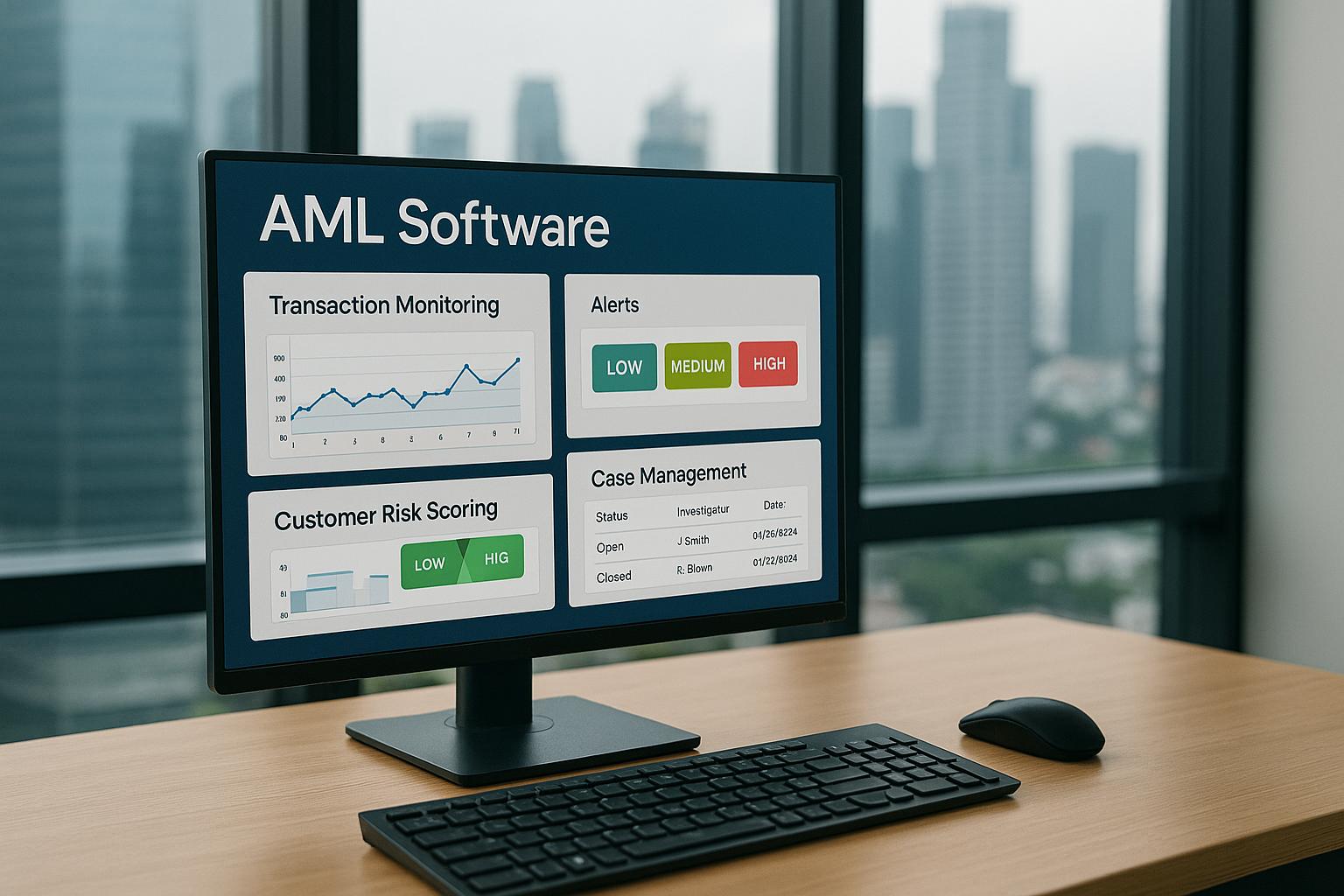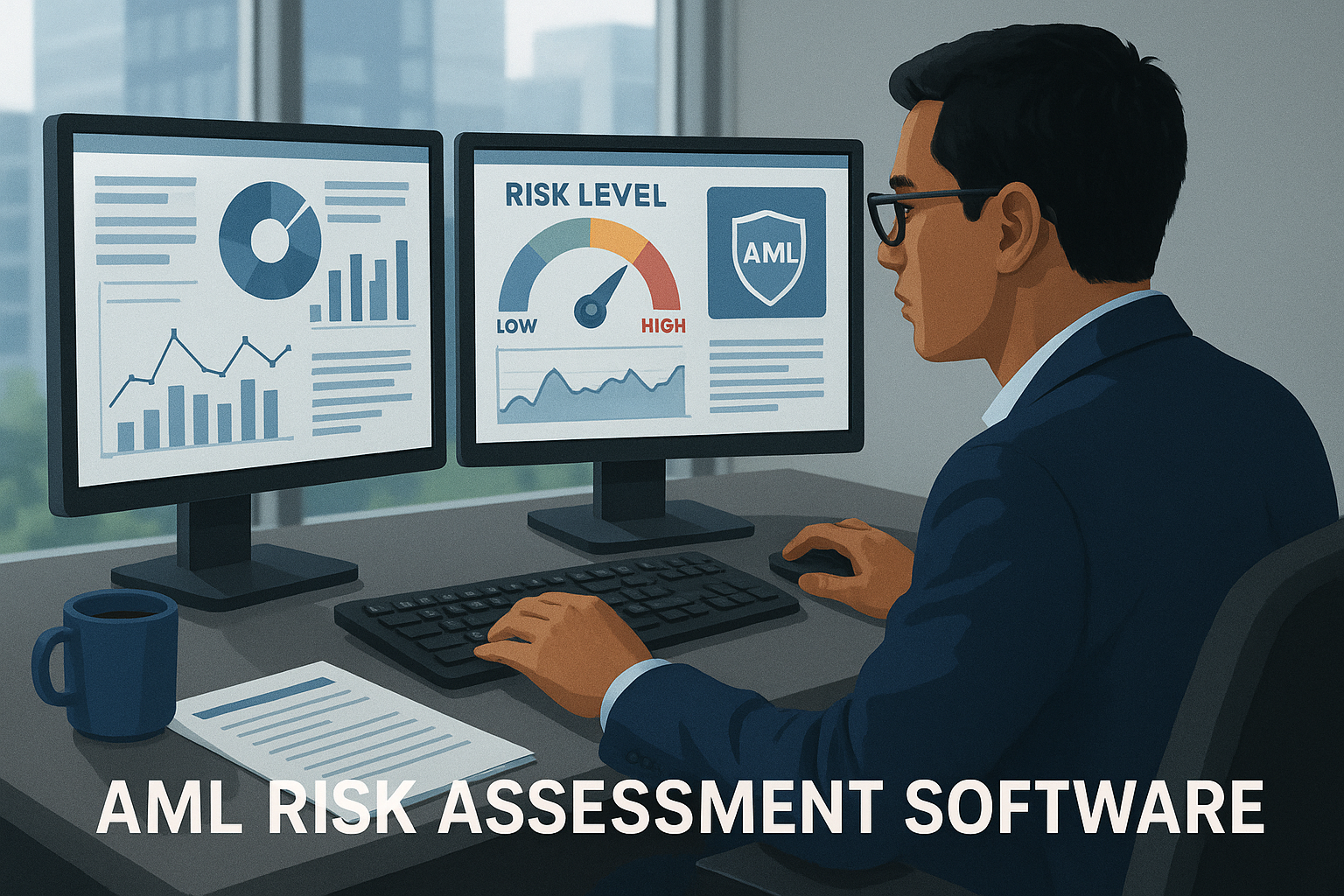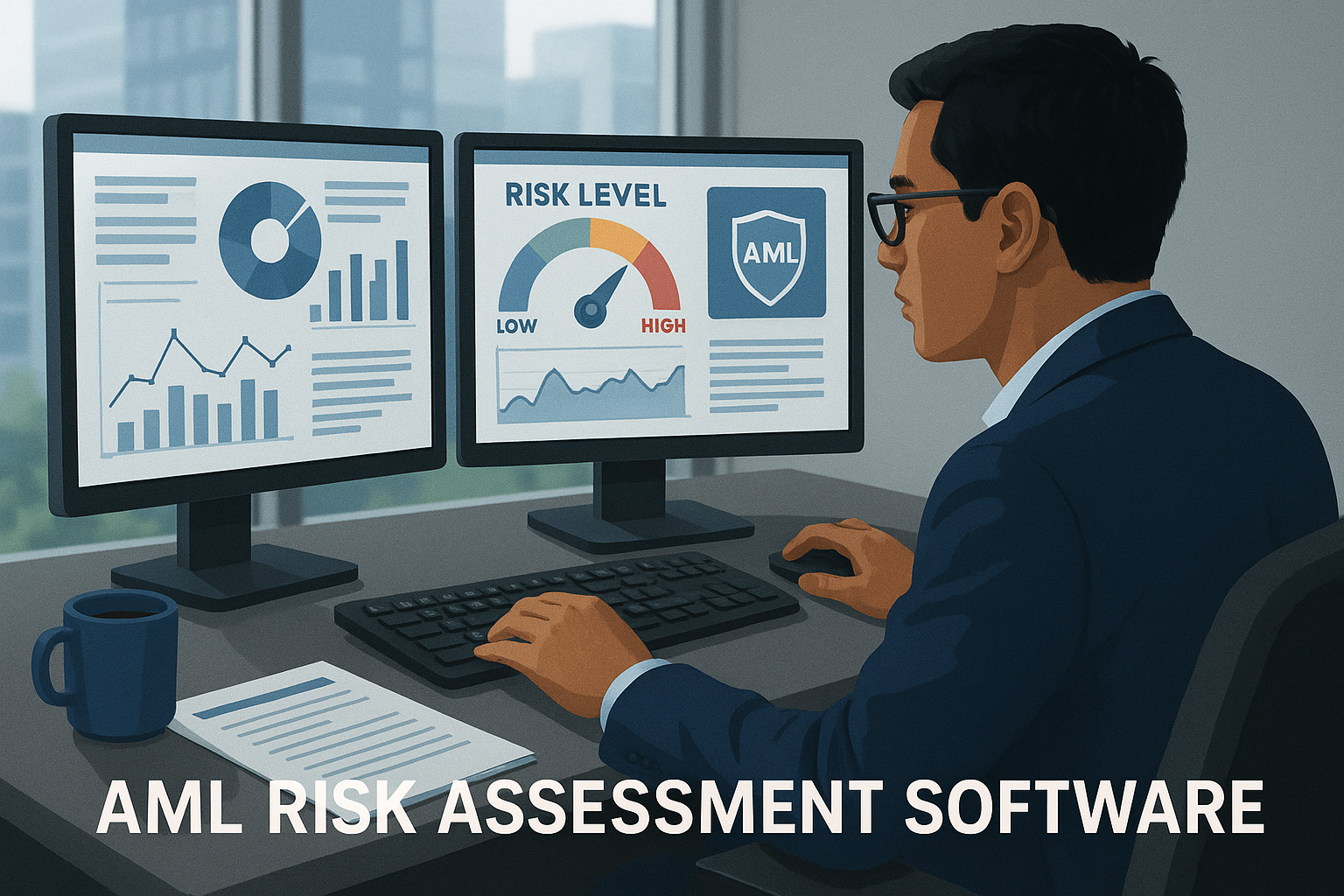What is eKYC or Electronic Know Your Customer?
.svg)
In today's digital world, where almost every transaction is carried out online, the need for secure and efficient identification and verification processes has become paramount. This is where eKYC, or Electronic Know Your Customer, comes into play.
eKYC is a digital method of verifying the identity of customers remotely, without requiring them to visit a physical branch or submit physical documents. It is a secure and convenient way for companies to onboard new customers, comply with regulatory requirements, and prevent fraud.
Understanding the Basics of eKYC
In simple terms, eKYC is a process that allows companies to electronically verify the identity of their customers. It involves collecting and verifying customer's personal information, such as their name, date of birth, address, and government-issued identification number, through digital means. This information is then cross-checked against various databases and validated to ensure its accuracy. By doing so, companies can confidently establish the identity of their customers and conduct business with them online.
{{cta-first}}
eKYC utilizes advanced technologies like biometric authentication, artificial intelligence, and machine learning to streamline the verification process. Through facial recognition, fingerprint scanning, and document scanning, companies can authenticate the identity of their customers in real-time, making the entire process faster and more efficient.
Furthermore, eKYC not only benefits companies by enhancing security and reducing fraud but also improves the overall customer experience. By eliminating the need for physical paperwork and in-person verification, eKYC offers a convenient and seamless onboarding process for customers. This digital transformation in identity verification not only saves time for both businesses and customers but also aligns with the global trend towards digitization and online services.
Additionally, eKYC plays a crucial role in regulatory compliance for businesses, especially in industries like finance and telecommunications. By automating the identity verification process and maintaining detailed audit trails, companies can ensure compliance with stringent regulations and mitigate the risk of penalties for non-compliance. This proactive approach to regulatory requirements not only safeguards businesses from legal consequences but also builds trust with customers by demonstrating a commitment to data protection and privacy.
eKYC vs Traditional KYC
Traditional KYC (Know Your Customer) processes typically involve customers physically visiting a branch and providing physical documents to establish their identity. These documents are then manually verified by the company's staff, which can be time-consuming and prone to errors. Additionally, customers often need to go through the same KYC process each time they wish to open an account or access a new service.
eKYC, on the other hand, eliminates the need for physical presence and paperwork. Customers can complete the entire verification process online, sparing them the hassle of visiting a branch or submitting physical documents. This not only saves time but also enhances customer experience by providing a seamless onboarding process.
Here's a comparative table that outlines the key differences between traditional Know Your Customer (KYC) processes and Electronic Know Your Customer (eKYC) processes.
Aspect
Traditional KYC
eKYC
Verification Method
In-person meetings, manual verification.
Online verification using digital tools such as live video interactions.
Document Submission
Physical document submissions.
Digital document submission via secure platforms.
Verification Process
Lengthy and involves extensive paperwork.
Streamlined and automated, significantly faster.
Customer Accessibility
Requires physical presence, limiting accessibility.
Accessible remotely, enhancing convenience for customers globally.
Data Handling and Storage
Manual storage and handling, higher risk of errors and security breaches.
Integrates with advanced data management systems for secure, efficient storage and analysis.
Compliance with Legal Requirements
Ensures knowledge of customers to safeguard against fraud.
Not only meets compliance but enhances security and fraud prevention with advanced technologies.
Read More: A Guide to Perpetual KYC
Benefits of Implementing eKYC Solutions
Implementing eKYC solutions can bring numerous benefits to companies across various industries. Firstly, it significantly reduces the lead time for customer onboarding, allowing companies to acquire new customers swiftly and efficiently. This can be particularly beneficial for businesses in sectors such as banking, insurance, telecommunications, and e-commerce.
eKYC also improves customer experience by eliminating the need for physical document submissions and branch visits. Customers can conveniently complete the verification process from the comfort of their homes, using their smartphones or computers. This not only enhances customer satisfaction but also increases customer retention and loyalty.
By leveraging the latest technologies, eKYC ensures a higher level of accuracy in identity verification. It reduces the risk of human errors and fraud attempts, minimizing the potential losses for companies. Moreover, eKYC improves compliance as it enables companies to fulfill regulatory requirements related to customer identification and due diligence.
Another significant advantage of eKYC solutions is the scalability they offer to businesses. As companies grow and expand their customer base, traditional verification methods can become time-consuming and resource-intensive. However, eKYC solutions can easily scale to accommodate a larger volume of customer verifications without compromising on speed or accuracy.
Furthermore, eKYC can provide valuable insights into customer behavior and preferences through data analytics. By analyzing the information collected during the verification process, companies can gain a better understanding of their target audience, allowing them to tailor their products and services to meet customer needs more effectively.
Typical eKYC Process
The eKYC process, while varying slightly by institution and jurisdiction, generally follows a streamlined digital workflow that enhances efficiency and security. Here’s a breakdown of a typical eKYC process that financial institutions might employ:
- Customer Initiation: The process begins when a customer initiates the onboarding process, often through a digital platform such as a banking app or a website.
- Document Submission: The customer uploads digital copies of required documents directly through the platform. This could include government-issued ID cards, passports, or proof of address.
- Identity Verification: Once documents are submitted, the eKYC system verifies their authenticity.
- Risk Assessment: Automated tools assess the risk associated with the customer based on the provided information. This includes checking against various databases such as those related to anti-money laundering (AML), countering the financing of terrorism (CFT), and politically exposed persons (PEPs).
- Compliance Checks: The system conducts regulatory compliance checks to ensure all provided information aligns with local and international compliance standards.
- Account Activation: If all checks are satisfactory, the customer’s account is activated, and they can start using financial services immediately.
This digital and automated approach not only expedites the onboarding process but also significantly reduces the workload on compliance teams and enhances the customer experience.
Key Components of an Effective eKYC System
An effective eKYC system comprises several key components that work together to ensure a secure and seamless verification process. The first essential component is a user-friendly interface that allows customers to easily navigate through the system and submit their information without any unnecessary complexities.
Biometric authentication is another crucial component of an eKYC system. By using technologies such as fingerprint scanning or facial recognition, companies can verify the identity of their customers with a high level of accuracy, reducing the risk of identity theft and fraudulent activities.
Data encryption and secure storage are vital aspects of eKYC systems to safeguard customer information. To protect sensitive data from unauthorized access, companies need to ensure that encryption protocols are implemented and updated regularly.
Furthermore, an effective eKYC system also includes robust monitoring and audit trails. By keeping track of every interaction and transaction within the system, companies can easily detect any suspicious activities or potential security breaches. Regular audits help ensure compliance with regulations and industry standards, providing an extra layer of security and trust for both customers and businesses.
Integration with reliable third-party verification services is another key component of a comprehensive eKYC system. By leveraging external databases and verification tools, companies can enhance the accuracy and efficiency of their identity verification processes. This integration not only streamlines the verification process but also adds an extra layer of validation to ensure the authenticity of customer information.
Challenges and Limitations of eKYC Adoption
While eKYC offers numerous benefits, there are also challenges and limitations that companies need to consider. One of the main challenges is ensuring the security and integrity of customer data. As cyber threats continue to evolve, companies must invest in robust cybersecurity measures to protect customer information from potential breaches.
Implementing strong encryption protocols and regularly updating security systems are essential to safeguard customer data. Additionally, companies should conduct regular audits and vulnerability assessments to identify and address any potential weaknesses in their eKYC systems. By prioritizing data security, companies can build trust with their customers and mitigate the risks associated with eKYC adoption.
Another limitation of eKYC adoption is the need for reliable internet connectivity. In regions with limited internet access, implementing eKYC systems can be challenging as customers may face difficulty in completing the verification process online. Companies must take this into account and provide alternative solutions for customers in such areas.
One possible solution is to establish physical verification centers in remote areas where customers can visit and complete the eKYC process in person. This approach ensures that individuals who do not have access to reliable internet connectivity are not excluded from availing the benefits of eKYC. Moreover, companies can collaborate with local governments and internet service providers to improve internet infrastructure in underserved regions, thereby enabling a wider adoption of eKYC.
Moreover, there may be legal and regulatory barriers in some jurisdictions that hinder the widespread adoption of eKYC. Companies operating globally need to stay updated with local laws and regulations to ensure compliance and avoid any legal repercussions.
Engaging legal experts and consultants who specialize in regulatory compliance can help companies navigate the complex landscape of eKYC regulations. By proactively monitoring and adapting to changes in laws and regulations, companies can ensure a smooth and compliant eKYC adoption process across different jurisdictions.
eKYC in Banks
The banking sector, traditionally burdened by extensive paperwork and lengthy verification processes, stands to gain significantly from the adoption of eKYC technologies. eKYC streamlines customer onboarding, reduces operational costs, and improves service delivery, positioning banks to thrive in the digital era.
- Streamlining Customer Onboarding: For banks, eKYC translates into a simplified, faster customer onboarding experience. New customers can complete the registration and verification process online without ever needing to visit a bank branch.
- Enhancing Customer Retention: By reducing the friction associated with the onboarding and verification process, eKYC not only attracts new customers but also enhances retention.
- Regulatory Adherence with Precision: Banks face stringent regulatory requirements designed to prevent fraud, money laundering, and other financial crimes. eKYC helps banks meet these requirements more effectively by providing precise and timely verification of customer data against various national and international databases.
- Fraud Reduction: By automating the verification process and utilizing advanced technologies such as biometric verification and artificial intelligence, eKYC significantly reduces the potential for fraud.
- Operational Efficiency: eKYC enables banks to handle larger volumes of customer onboarding without additional resources.
By integrating eKYC solutions, banks can enhance their competitiveness and appeal in a market that is increasingly driven by digital innovation and consumer expectations for quick and easy service.
Implementing eKYC: Importance of Real-Time Screening
Implementing eKYC in financial institutions involves the integration of real-time screening processes that are crucial for the timely identification and mitigation of risks associated with new and existing customer relationships. Real-time screening is an essential component of an effective eKYC strategy, offering immediate insights into potential risks, thereby enabling proactive compliance and fraud prevention.
- Immediate Risk Identification: Real-time screening allows banks and other financial institutions to instantly verify the identities and backgrounds of potential clients as they begin the onboarding process.
- Dynamic Compliance Adherence: Regulatory landscapes are continually evolving, with new requirements and updates being implemented regularly. Real-time screening ensures that financial institutions remain compliant with the latest regulations by automatically applying these updates to the screening processes.
- Enhanced Customer Experience: From a customer's perspective, real-time screening translates into a smoother and faster onboarding experience. Since the verification processes are conducted instantaneously, there is no lengthy waiting period.
- Reduced Operational Burdens: Automating the screening process in real-time significantly reduces the workload on human resources.
Implementing real-time screening within the eKYC framework thus not only enhances compliance and security but also operational efficiency and customer satisfaction. It is an indispensable tool for financial institutions aiming to modernize their operations and align with current technological and regulatory standards.
{{cta-ebook}}
Real-Time Screening with Tookitaki
Tookitaki, a leading provider of innovative compliance solutions, offers advanced capabilities specifically designed to enhance the real-time screening processes of financial institutions via its Onboarding Suite. Tookitaki's approach integrates cutting-edge technology with comprehensive data analysis to ensure robust and efficient compliance operations.
- Advanced Analytics and Machine Learning: Tookitaki's eKYC solution employs sophisticated analytics and machine learning algorithms to analyze and verify customer data in real-time.
- Integration with Global Databases: One of the strengths of Tookitaki’s screening solution is its ability to seamlessly integrate with global regulatory and watchlist databases. This integration allows for instant cross-referencing of customer data against lists of known criminals, PEPs, and sanctioned entities.
- Customizable Screening Parameters: Recognizing that different institutions and jurisdictions have varying requirements and risk appetites, Tookitaki provides customizable screening options within its eKYC framework.
- Scalability and Reliability: Tookitaki’s solution is designed to handle large volumes of customer data without compromising performance. This scalability ensures that financial institutions can grow and expand their customer base without the need for proportional increases in compliance resources.
By leveraging Tookitaki's eKYC solutions, financial institutions can enhance their compliance operations with real-time screening that is not only comprehensive and compliant with global standards but also efficient and adaptable to future changes. This makes Tookitaki an invaluable partner for banks and financial services looking to stay ahead in the fast-evolving world of financial compliance and technology.
Experience the most intelligent AML and fraud prevention platform
Experience the most intelligent AML and fraud prevention platform
Experience the most intelligent AML and fraud prevention platform
Top AML Scenarios in ASEAN

The Role of AML Software in Compliance

The Role of AML Software in Compliance










